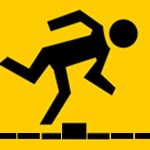Most properties will have floorboards of some kind as part of their floor construction. The exception to this would be solid concrete floors and other types of flooring, such as block and beam.
However, when it comes to residential property, the majority of floors will be constructed using floor joists and covered with floorboards. This can include standard timber floorboards, or tongue and groove chipboard sheets.
Floorboards are obviously very important, as they provide a surface to walk on. Without them you would be walking along joists. Obviously, this would be both dangerous and impractical. They also spread load through the joists by creating a large surface area.

This means that the combination of joists and floorboards, is much stronger than the individual elements. As a result, the floor can support a good amount of weight above it.
However, floorboards are not structural. If you removed every floorboard from a house, it would have zero effect on the building’s structural integrity. In fact, in most residential houses, you could go one further and remove all the joists as well. Even in this case, the properties overall structural integrity would be intact.
Obviously, without floors, a property is unusable and wouldn’t be a livable space. But it certainly doesn’t mean that the property will have structural issues if they are removed.
With that said, the floors are a permanent feature. Therefore, they are part of the properties structure and do support internal loads within the property. They must have a good load bearing capability, in order to support weight caused by people walking on them and furniture inside the house.
Common problems with floorboards
Despite floorboards not being structural, they can still cause issues if they become defective and damaged. Common issues with floorboards include:
- Damp, mould, and rot
- Insect infestation
- Natural defects such as, cracks, cupping and twisting, etc.
For natural defects this will usually be less of an issue. However, serious twisting and cupping could create small trip hazards.
More serious issues are things like rot and wood worm. These can seriously deteriorate the timber and lead to them becoming dangerous. Both can soften and weaken the wood leading to the boards failing.
Also, if these types of problem are present in your floorboards, they could be present in the joists below. This could pose a far bigger problem and seriously undermine the strength of your floors.
This is somewhat of a grey area when we talk about something being structural. Obviously, the floor itself has its own structural integrity and if it fails, this could be very dangerous, but it still won’t result in the building being structurally unsound overall.
However, if there is rot or woodworm causing major issues in joists, they could potentially spread to structural elements of the building. A few examples include:
- Beams
- Perlins
- Rafters
Also, when there is serious damp present, this can be a sign of a structural defect and excessive moisture can have a detrimental effects on the properties brick and blockwork (which is structural).
What to do if you have damaged floorboards
The main point to realise here, is if there are problems with floorboards, then something is causing them, and the underlying issue could be more serious.
If you do notice damp, mouldy, or rotten boards, or a sign of wood boring insects, you should act quickly. The goal should be to determine the underlying issue that is causing the damage. Once this is identified it should be fixed correctly.
Once you have carried out repairs, you can treat or replace any affected timber floorboards and joists.
By following this process, you will ensure that you completely fix the problem and avoid it returning in the future. Not only will this fix the internal flooring issues, but it could also avoid more serious structural issues later down the line.
Conclusions
Floorboards are definitely not structural. You can freely remove them without any affect on the surrounding property. This means that replacement and repair is a relatively simple job.
With that said, problems with things like rotten boards or even woodworm, could be the sign of a more serious underlying problem. In the worst case scenario, these could lead to structural issues in other areas of the property. This can be even more of a risk if issues are left untreated for long periods of time.




